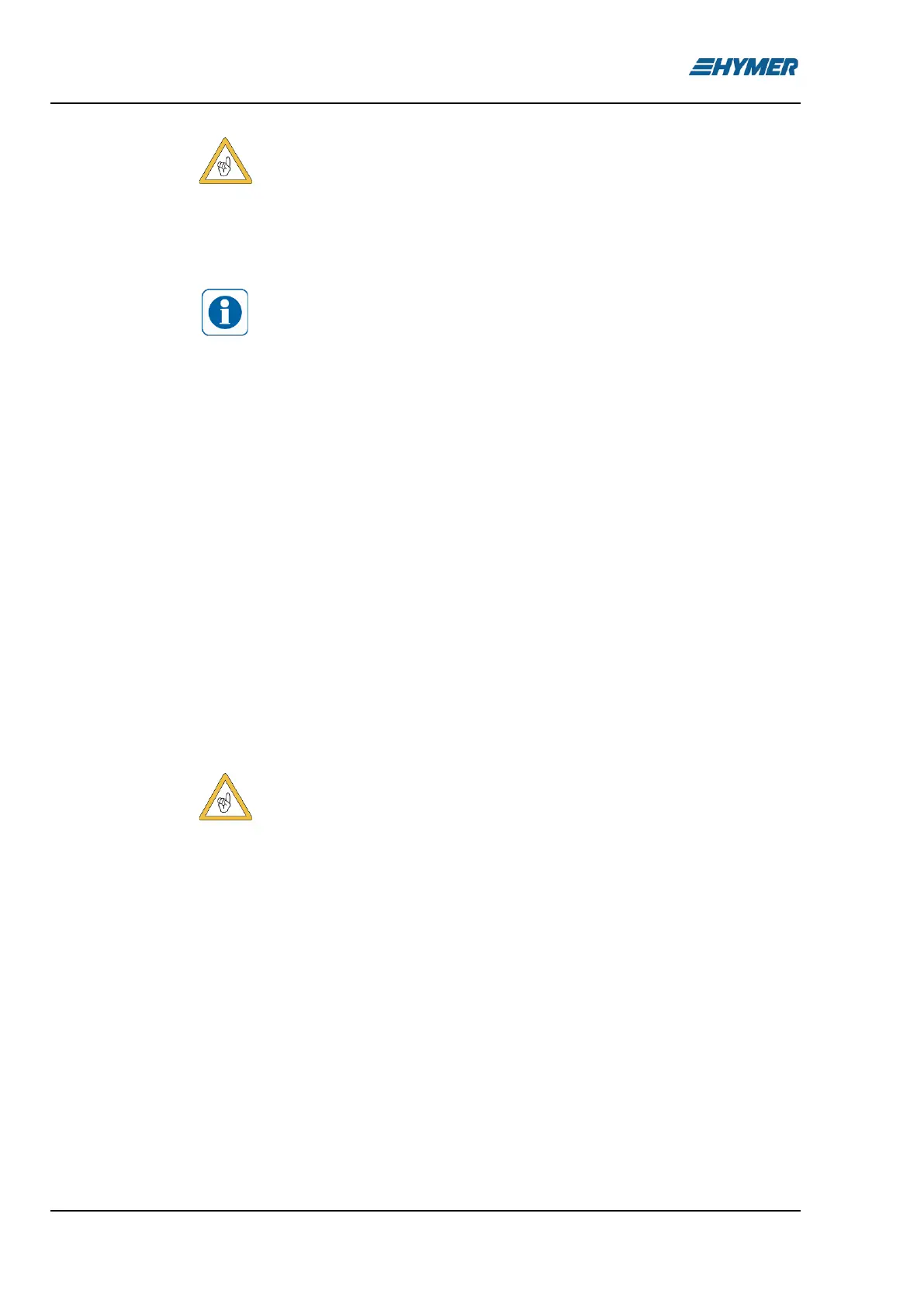Hymer BMC-T (2023) handleiding
Handleiding
Je bekijkt pagina 132 van 286

8 Electrical system
132 B-MC I/T - 01/23-1 - EHG-0016-03EN
If there are two living area batteries: When changing, ensure that the
batteries are properly installed. Install the batteries so that the positive
terminal on one battery is lying next to the negative terminal of the other
battery.
If there are two living area batteries: When changing, ensure that the
batteries are properly connected (see Installing the auxiliary battery).
Depending on the model and the equipment, up to two auxiliary batteries
may be connected to the lead battery.
Lead batteries are maintenance-free. Maintenance-free means:
It is not necessary to check the acid level.
It is not necessary to lubricate the battery poles.
It is not necessary to refill the distilled water.
Even a maintenance-free battery must be recharged.
Recommendation: Perform a full charging cycle every 6 to 8 weeks. De-
pending on the battery capacity and the charger, the charging cycle will
last 24 to 48 hours.
When the vehicle is not connected to the 230 V power supply or the 230 V
power supply is switched off, the living area battery supplies the living area
with 12 V DC. The living area battery has a limited power supply only. For
this reason, electrical appliances such as the radio and the lights should not
be operated for a long time without using the 230 V power supply.
The living area battery is installed in the double floor and is accessible via a
floor trap in the living area.
The living area battery is discharged by the closed circuit current which
some electrical appliances continuously require. When the battery cut-off
switch is switched off, the charging condition of the living area battery can
drop to approx. 40 to 80 %.
Total discharge damages the battery. The consequence may be defor-
mation, heat development, and damage due to scorching.
Recharge battery in good time.
Note that even a fully charged living area battery can be fully discharged by
closed circuit currents (inactive appliances).
Low temperatures outside reduce the capacity available.
The self-discharge rate of the battery is also dependant on temperature. At
20 to 25 °C the self-discharge rate is approx. 3 % of the capacity per month.
The self-discharge rate will increase with rising temperatures: At 35 °C the
self-discharge rate is approx. 20 % of the capacity per month.
An older battery no longer has the complete capacity available.
The higher the number of active electrical appliances, the faster the energy
of the living area battery is consumed.
Only use the transformer/rectifier to charge the living area battery. There-
fore, connect the vehicle to a 230 V power supply system as often as pos-
sible. As a principle, only use the 230 V connection on the vehicle (CEE so-
cket outlet) for connecting.
Position
Discharging
Charging
Bekijk gratis de handleiding van Hymer BMC-T (2023), stel vragen en lees de antwoorden op veelvoorkomende problemen, of gebruik onze assistent om sneller informatie in de handleiding te vinden of uitleg te krijgen over specifieke functies.
Productinformatie
| Merk | Hymer |
| Model | BMC-T (2023) |
| Categorie | Niet gecategoriseerd |
| Taal | Nederlands |
| Grootte | 31425 MB |


